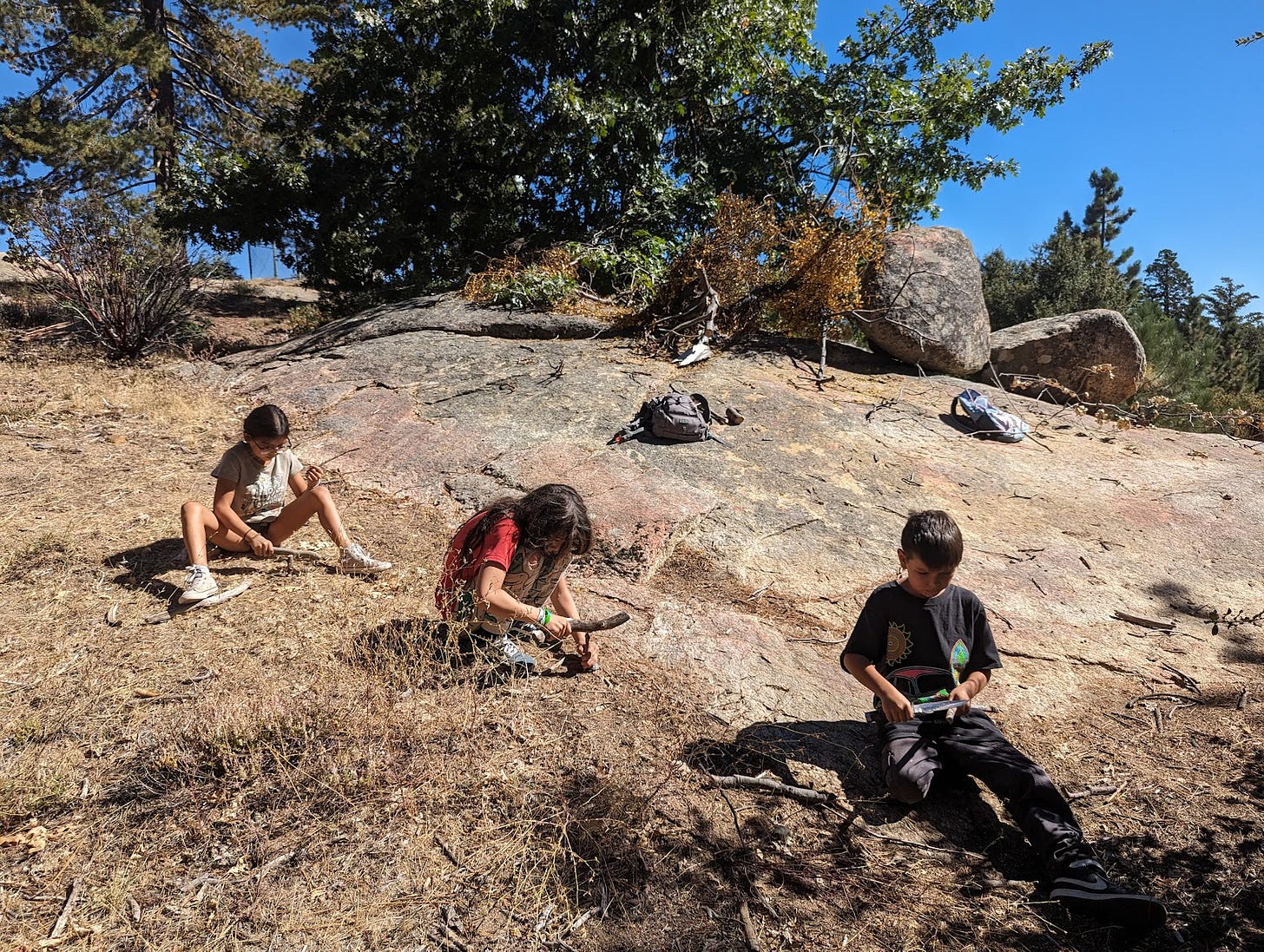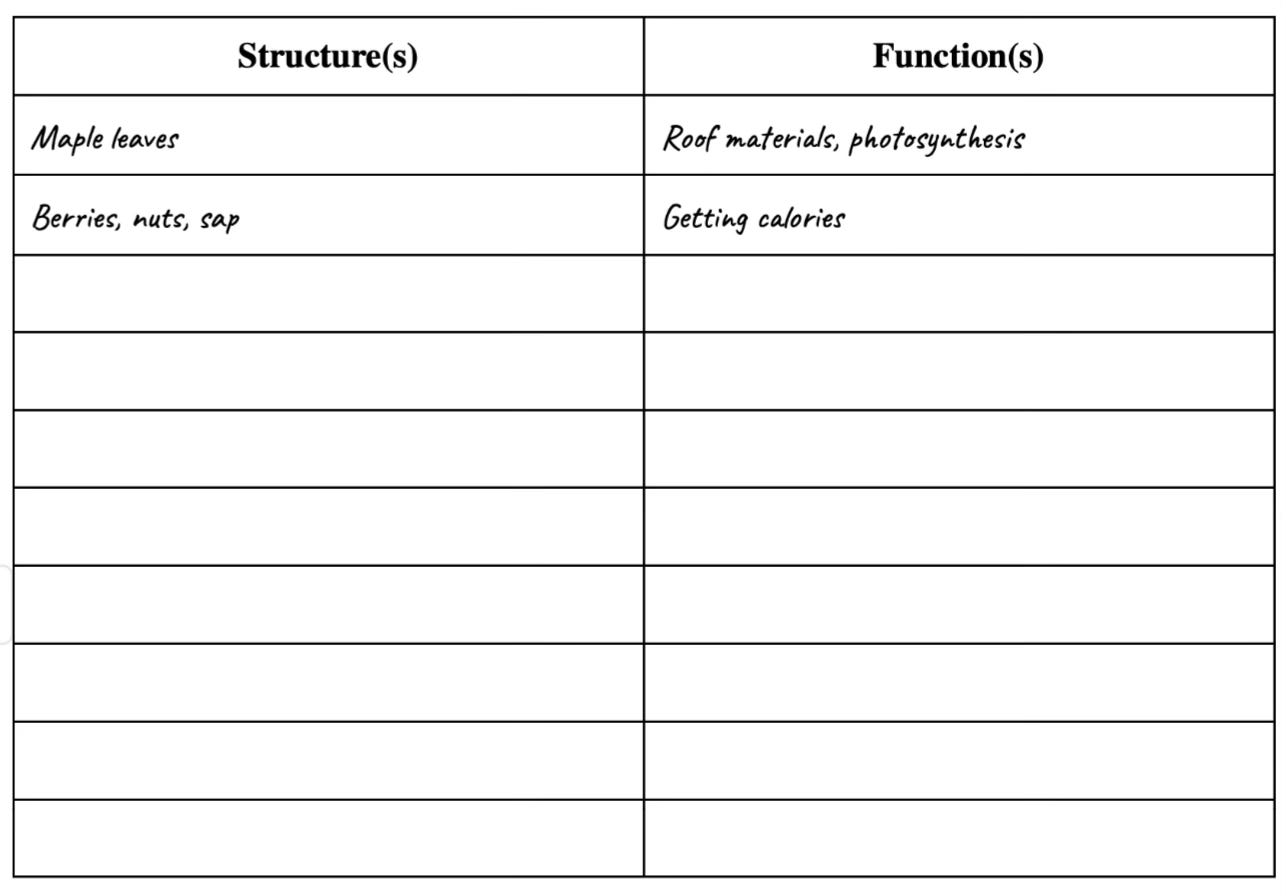If I Had a Hammer? Exploring Structure and Function
Coming Back to Nature: Science-Rich Activities for Children and Their Adults
Note: This blog is a serialization of a book titled Coming Back to Nature: Science-Rich Activities for Children and Their Adults. Here is the preface. The first field trip is Taking Education Outside.
Introduction
The New Oxford American Dictionary defines a hammer as “a tool with a heavy metal head mounted at right angles at the end of a handle, used for jobs such as breaking things and driving in nails.” This definition includes a description of the structure of a hammer: “a heavy metal head mounted at right angles at the end of a handle” and a description of its function: “a tool… used for jobs such as breaking things and driving in nails.” The big idea of structure and function is that an object’s structure contributes to the functions it can perform. A heavy metal head with a handle enables hammers to drive nails into wood. Understanding how the structure of various entities supports their functions is central to understanding and designing systems. Unfortunately, the one-structure-one-function principle of mechanical design has permeated our industrial culture. In this post, we suggest activities for helping children learn how structure supports function, and how in ecosystems and ecological design many different kinds of entities can perform a given function and individual things can engage in many functions.
Activity
Exploring Structure and Function as an Occasional Stand-Alone Activity
Starting around three or four, children can identify the physical features of things that support those things performing their functions. All it takes is scaffolding in the form of age-appropriate questions. Your task is to identify some structures, describe one or more functions each can do, and the physical characteristics of those things that enable them to do what they do. You can also think about functions you might need to fulfill and structures you might use for those functions.
You can start this activity with younger children by pointing to objects they can name and asking them, “What is that?” For example, you might point at a saw. Then you could ask them, “What do we use saws for?” And then, “What about a saw makes it so we can cut wood with it?” If you need to scaffold more, you point to another object (e.g., a backpack) and ask if it’s a saw, and if not, why not?
Exploring Structure and Function While Wandering, Working, and Playing
Like most activities, we don’t view exploring structure and function as a one-time thing or something to do occasionally to keep the idea fresh in children’s minds. We do recommend that you offer the activity to the kids you work with from time to time. We also suggest that you do as we do, weave the idea of structure supporting function into your everyday activities with kids. For example, while building, you might ask your kids to describe what they’re looking for in roofing materials and, if the kids don’t bring it up, mention that broad leaves are sheets and sheets make good roofing material because they function like shingles that support rain to run off the roof (see Patterns that Connect for more information on sheets and other structural patterns). Or, if a child is looking for something to break open an acorn or other nut with, you might ask them what features they are looking for in something they can use as a hammer. Similarly, if a child asks you about carving a spoon, you might ask what features make a spoon a spoon and what kind of natural material might support its function of moving a small amount of food from place to place.
Finding Weird Hammers
People who own companies that make things that people don’t need benefit from the idea that every function needs a specific object to achieve that function. When we’re out in the forest making things or in other contexts where improvising is required, recognizing that many different objects can perform a given function is critical. To make sure kids get the idea that many objects can serve multiple purposes, I like to ask them to find as many different types of things as they can that could be used as a hammer or as many types of things that can act as a shovel, or a container, or as string, or glue. Sometimes, I integrate this into the above activity, and sometimes, when we’re cracking acorns or building a shelter. Sometimes, kids make discoveries like this on their own. In those cases, I like to share their discoveries with the group.
Stacking Functions
The owners of factories also benefit from the idea of single-use items. Plastic bags are one of the most egregious examples of this. At our house, we use glass jars as glasses, storage containers, organizers, and for taking stuff along when we go places. Permaculuralists use the phrase stacking functions to describe filling multiple needs with single entities. The idea of stacking functions comes up a lot when we design systems. For example, my apple trees supply us with fruit, attract pollinators, provide shade, and produce suckers that we use for making things. To ensure that kids understand the benefits of meeting multiple needs with single entities, I'll ask them, will you tell me how you could use this rock, stick, plant, or pile of leaves?
Nature Science
In living systems, most entities perform multiple functions, and many entities perform most tasks. Consider the function of a rabbit in an ecosystem. Rabbits eat plant matter, poop and pee out plant fertilizer, release carbon dioxide that is an essential resource for plants, and so much more. That's an example of an individual species performing multiple tasks. Conversely, do ecosystems rely on rabbits for any of their roles? No. Many other animals and microbes eat plant matter, and all animals and many microbes poop and pee out plant fertilizer and release carbon dioxide. Those are examples of multiple entities performing the same individual functions.
One of the main principles of mechanical design is to isolate functions in independent structures so that each structure performs a single function and no other structure performs that function. During the modern era of industrialization, this principle of matching structure to function in a 1:1 match has heavily influenced the thinking of those of us who are far from our ancestral land-based traditions and communities. Thinking of the world in terms of one-to-one matchups between structures and functions suits the needs of corporations that profit from consumers purchasing many special-purpose mechanisms where one general-purpose device would suffice.
Thinking about how various structures enable various functions is valuable in many situations. Being stuck on having a 1:1 match between structures and functions can be a real problem for people. If I'm out in the woods and want to drive a stake into the ground, I'll probably fail if I scan the landscape for a hammer. I’ll be much better off if I look for any heavy object I can hold in my hand and use without much risk of smashing my fingers.
Permaculturalists, all of our ancestors, and modern land-based peoples not only had and have a more open-minded view of how structures support function. They have a habit of getting as much functionality as possible from a given structure and of being able to use many different structures to achieve a specific function.
Education Ideas
The Next Generation Science Standards (NGSS) list structure and function as one of their “Cross Cutting Concepts (CCCs). They define this concept like this: “Structure and Function refers to the complementary relationship between the shape and properties of natural or human-made systems with their functionalities.” I agree with the authors of the NGSS about this definition and its importance as a cross-cutting concept.
Unfortunately, the factory view on structure and function shows up very clearly in factory-like curricula designed to address this concept. This view manifests in curricula as matching individual activities (educational structures) with individual objectives (the educational function). When I searched for “Cross Cutting Concepts Structure Function,” the first curriculum unit I found proposed a single activity to teach kids this complex concept in a 1:1 way. Much to my dismay, the author not only presented the task as the only task to address this objective, but the task itself was to match a set of structure cards one-to-one with a set of function cards. Double sigh!
Forest-like learning environments and curricula tend to include many activities, including play, to support any learning goal, and each activity tends to support many goals. For example, in this post, we suggest providing lots of different opportunities for kids to experience and learn about how structure supports function, and all of those activities support learning many different ideas and skills.
Wrap Up
The relationship between the structure of things and the functions they enable is significant and complex. The idea of a one-to-one correspondence between structure and function simplifies mechanical design and production and serves the corporate power elite. Sadly, it also transforms children’s thinking from incredibly imaginative play where a stick or a stone can be anything from a table to a friend to factory-like thinking, where we imagine our happiness hinges on having some specific product. As educators, we must not be seduced into 1:1 matching of activities with objectives and instead provide rich and playful learning environments that inspire sense-making and skill-building. In such environments, kids bump into skills and ideas from multiple points of view, and all activities are rich enough to support learning various concepts and skills. As a feature of such learning environments, we can have educational objectives like understanding structure and function in mind and look for diverse contexts to support such understanding.





Well explained and very heplful insight, thank you!